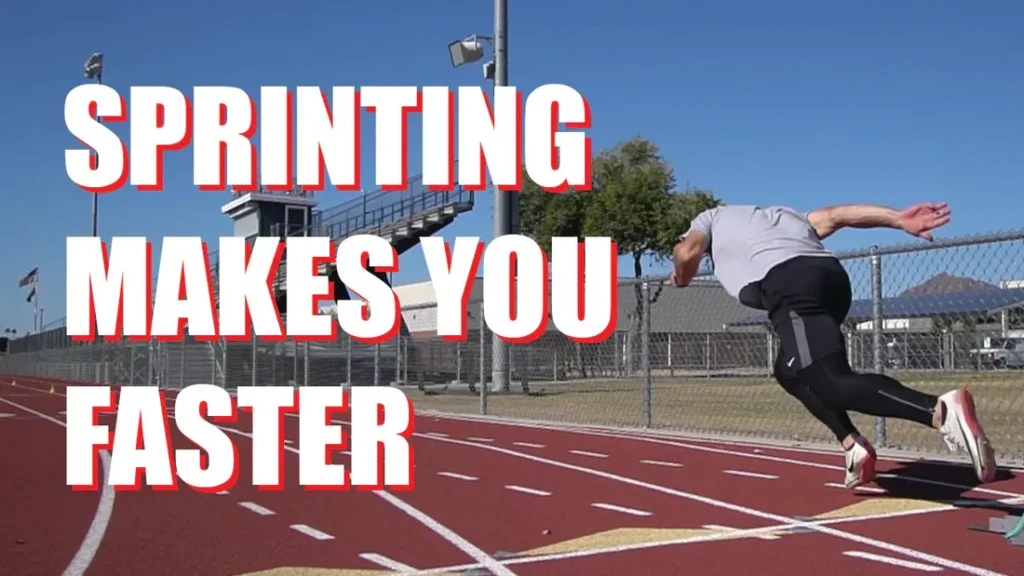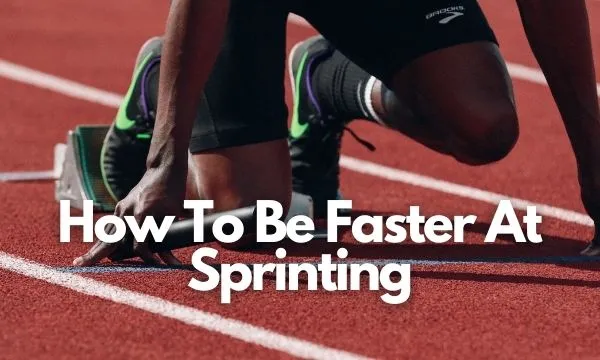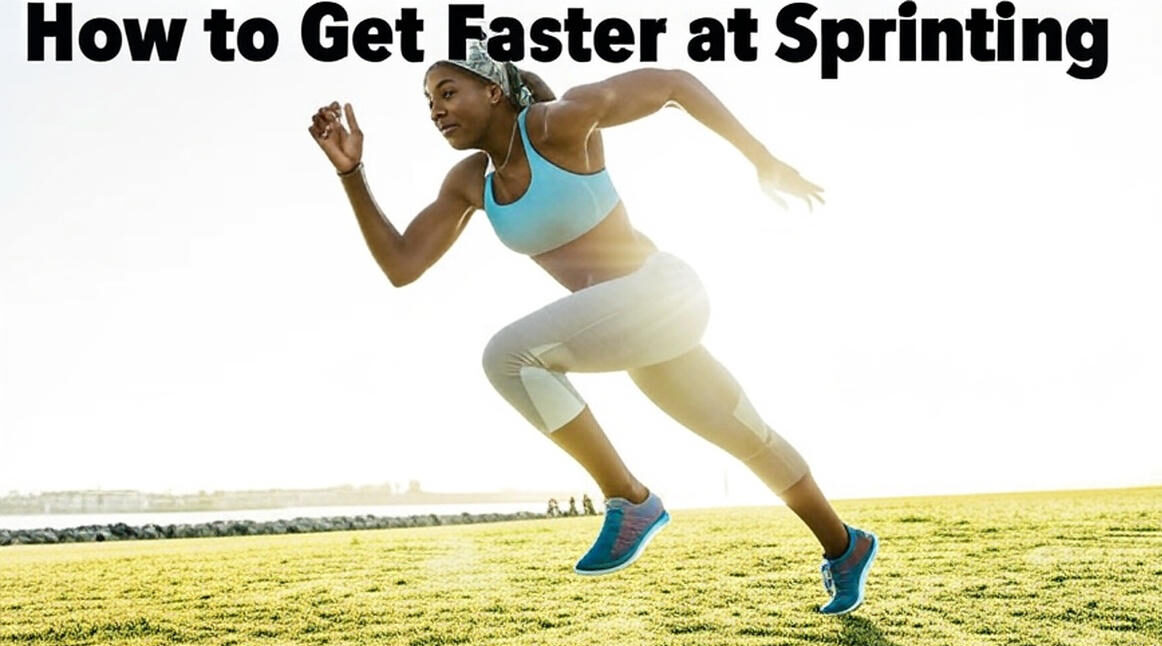Unlocking your top speed can feel like gaining a superpower. Whether you’re an athlete looking to gain an edge in sports like football or rugby, a track competitor aiming to shave seconds off your time, or simply someone who wants to improve their fitness, learning how to get faster at sprinting is a game-changer. This guide will provide you with the essential techniques, workouts, and tips to boost your speed. We will break down everything from proper form to strength training, giving you actionable steps to become a more powerful and efficient sprinter.
Getting faster isn’t just about running hard; it’s about running smart. Many factors contribute to your overall speed, including your mechanics, muscle strength, and training regimen. By focusing on the right areas, you can make significant improvements. This article will cover proven methods to help you understand what it takes to get really fast at sprinting and provide you with the tools to achieve your goals.
Table of Contents
Key Takeaways
- Proper Form is Crucial: Mastering your sprinting mechanics, including posture, arm swing, and foot strike, is fundamental to increasing speed and preventing injury.
- Strength and Power are Essential: Building strength, particularly in your legs and core, provides the power needed for explosive acceleration and maintaining top speed.
- Train Smart, Not Just Hard: Your training should be structured, separating acceleration and max speed workouts, and allowing for full recovery between reps.
- Consistency is Key: Lasting improvements take time. Quick fixes are rare, but consistent, dedicated training will lead to significant gains.
Understanding the Science of Sprinting
Before diving into specific exercises, it’s helpful to understand what makes a person fast. Sprinting is a complex movement that involves two main phases: acceleration and maximum velocity. Acceleration is your ability to get up to speed from a standstill, while maximum velocity is your top-end speed. Both phases require different techniques and physical attributes. Your sprinting speed is influenced by stride length (how much ground you cover with each step) and stride frequency (how many steps you take per second). Improving one or both of these elements will make you faster.
Power is another critical component. It’s the combination of strength and speed. When you sprint, your muscles need to produce a massive amount of force in a very short amount of time to propel your body forward. This is why strength training is just as important as running drills. Building powerful glutes, hamstrings, quads, and core muscles will directly translate to faster times on the track or field.
How to Get Faster at Sprinting: The Role of Form and Technique
Perfecting your form is one of the most effective ways to learn how to get faster at sprinting. Poor technique wastes energy and can even lead to injury. Efficient mechanics ensure that all your power is directed toward moving you forward as quickly as possible.
Perfecting Your Posture
Your posture is the foundation of good sprinting form. While running, you should aim for a tall, upright position with a slight forward lean coming from your ankles, not your waist. Imagine a straight line running from your head, through your hips, to the foot that is pushing off the ground. Your head should be in a neutral position with your eyes looking forward, not down at the ground. Keep your shoulders relaxed and down, avoiding any tension that can restrict your movement and waste precious energy.

Mastering Your Arm Swing
Your arms play a vital role in providing balance and driving momentum. Bend your elbows at approximately a 90-degree angle. Swing your arms forward and backward from the shoulder, not side to side across your body. Your hands should move from your hip up to your chin. This powerful, coordinated arm action helps drive your legs and maintains your stability at high speeds. Avoid clenching your fists; keep your hands relaxed to prevent unnecessary tension from creeping up into your shoulders and neck.
Optimizing Your Foot Strike
How your foot hits the ground is critical for speed. When sprinting, you should land on the balls of your feet, not your heels. This allows for a quicker, more explosive push-off. Think of your foot as a spring; landing on the ball of your foot helps you “bounce” off the ground with each stride. This technique minimizes ground contact time, which is a key factor in running faster. The goal is to spend as little time on the ground and as much time in the air as possible.
How to Get Faster at Sprinting Workouts
A well-structured training plan is essential for seeing real progress. Your workouts should focus on improving both acceleration and top speed. It’s often best to train these two qualities on separate days to get the most out of each session. Remember, the goal of speed training is quality over quantity. You need to be fresh to run fast, so full recovery between sprints is non-negotiable.
Here are some effective sprinting workouts you can incorporate into your routine.
Acceleration-Focused Workouts
Acceleration is about generating massive power in your initial steps. These drills train your body to explode off the starting line.
- 10-20 Meter Sprints: Perform 6-8 sprints over a short distance of 10 to 20 meters. Focus on an explosive start and driving hard with each step. Rest for 1-2 minutes between each sprint to ensure you are fully recovered. You can use different starting positions, like a three-point stance (common in football) or starting blocks (for track).
- Hill Sprints: Find a moderate incline and sprint up it for 20-30 meters. The resistance from the hill forces you to maintain a forward lean and use powerful leg drive, which is perfect for building acceleration strength. Walk back down for recovery.
- Resisted Sprints: Using a sled or resistance band can be a great way to improve your starting power. The added weight forces your muscles to work harder. Keep the weight light enough that it doesn’t significantly alter your running form.
Maximum Velocity Workouts
These drills are designed to improve your top-end speed.
- Flying Sprints: Mark out a 60-meter distance. Use the first 20 meters to gradually accelerate, run at your absolute maximum speed for the next 20 meters (the “fly zone”), and then gradually decelerate over the final 20 meters. The focus is on that middle 20-meter segment. Perform 4-6 reps, taking 3-5 minutes of rest in between.
- Overspeed Training: This involves running slightly faster than you normally can, often with assistance. A common method is to run on a slight downhill slope. This trains your nervous system to handle faster leg turnover rates. Be cautious with this method to avoid injury.

How to Get Faster at Sprinting for Football and Rugby
For field sports like football and rugby, sprinting speed is a defining attribute. The ability to break away from a defender or chase down an opponent can change the course of a game. While the principles of sprinting are universal, athletes in these sports need to focus on sport-specific speed. This includes short-burst acceleration, changing direction at high speed, and being able to sprint effectively while carrying a ball.
Workouts should mimic the demands of the game. Incorporate drills that involve sprinting for 5-10 yards, planting your foot, and changing direction. Practice accelerating out of different stances, such as a linebacker’s crouch or a receiver’s starting position. Drills like the “L-Drill” and “Pro Agility” are excellent for developing the type of agility and speed needed on the field. Learning how to get faster at sprinting for football or how to get faster at sprinting for rugby means combining pure speed work with agility and reaction drills.
How to Get Faster at Sprinting for Track
For track and field athletes, particularly those competing in the 100m and 200m, technique is paramount. Learning how to get faster at 100 meter sprints or how to get faster at 200m sprint events requires meticulous attention to detail in every phase of the race.
- The Start: A powerful and efficient start from the blocks is essential. Practice driving out low and powerfully, gradually transitioning to an upright position over the first 30-40 meters.
- The Drive Phase: This is the initial acceleration phase where you build momentum. Focus on a strong forward lean and powerful, piston-like leg action.
- The Transition: Smoothly moving from your drive phase into your upright, maximum velocity running is a skill that requires practice. Avoid popping up too quickly.
- Maintaining Top Speed: The key here is to stay relaxed. Tension is the enemy of speed. Focus on maintaining your form and letting your speed flow, rather than forcing it.
How to Get Faster at Sprinting at Home
You don’t always need a professional track or a state-of-the-art gym to work on your speed. There are plenty of exercises and drills you can do at home or in a local park. Bodyweight strength exercises like squats, lunges, and glute bridges are fantastic for building lower body power.
Plyometric exercises, or jump training, are also incredibly effective. These explosive movements teach your muscles to produce maximum force in minimum time.
Simple Home Plyometric Drills
- Box Jumps: Find a sturdy box or platform and jump onto it, landing softly.
- Broad Jumps: From a standing position, jump forward as far as you can.
- High Knees: Run in place, driving your knees up toward your chest as quickly as possible.
- Butt Kicks: Run in place, trying to kick your glutes with your heels.
Combining these plyometric drills with bodyweight strength work is a great way to start learning how to get faster at sprinting at home.
Strength Training for Speed
Stronger muscles produce more force, which translates to faster sprinting. A good strength training program is a vital part of any speed development plan. Focus on compound exercises that work multiple muscle groups.
Key Strength Exercises for Sprinters
| Exercise | Target Muscles | Why it Helps |
|---|---|---|
| Squats | Quads, Glutes, Hamstrings, Core | Builds foundational lower body strength and power. |
| Deadlifts | Hamstrings, Glutes, Back, Core | Develops the powerful posterior chain essential for sprinting. |
| Lunges | Quads, Glutes, Hamstrings | Improves single-leg strength and stability. |
| Nordic Curls | Hamstrings | Strengthens hamstrings eccentrically, helping to prevent injuries. |
| Weighted Planks | Core (Abs, Obliques, Lower Back) | Builds a strong, stable core to transfer force efficiently. |
Incorporate these exercises into your routine 2-3 times per week on non-sprinting days. Focus on proper form and progressive overload, gradually increasing the weight as you get stronger.
How Long Does it Take to Get Faster at Sprinting?
This is a common question, but the answer varies for everyone. Factors like your current fitness level, training history, genetics, and dedication all play a role. You might see small improvements in form and technique within a few weeks. However, significant and lasting speed gains from strength and power development take months of consistent training.
Trying to find out how to get faster at sprinting in a week or even how to get faster at sprinting in one day is unrealistic. While you can make minor technical adjustments quickly, true speed development is a long-term process. Be patient, stay consistent with your training, and focus on gradual progress.
FAQs about How to Get Faster at Sprinting
Q: Can I get faster at sprinting by just running more?
A: While running is important, just running more without a plan can lead to plateaus or injury. To get faster, you need a structured approach that includes specific speed drills, strength training, and adequate rest.
Q: How important is stretching for sprinting?
A: Stretching is very important. Dynamic stretching (like leg swings and torso twists) should be a key part of your warm-up to prepare your muscles for intense activity. Static stretching (holding a stretch for 20-30 seconds) is best done after your workout to improve flexibility and aid recovery.
Q: What should I eat to improve my sprinting speed?
A: A balanced diet rich in lean protein, complex carbohydrates, and healthy fats is crucial for fueling your workouts and helping your muscles recover and grow. Staying hydrated is also essential for performance.
Q: Can I improve my sprint speed if I’m not naturally fast?
A: Absolutely! While genetics play a role, everyone can improve their speed through dedicated training. By improving your running mechanics, building strength and power, and following a smart training plan, you can become significantly faster.
Conclusion of How to Get Faster at Sprinting
Learning how to get faster at sprinting is a journey that combines science, hard work, and dedication. There are no shortcuts to becoming a faster runner, but by focusing on the core principles of proper form, targeted strength training, and smart workout design, you can unlock your full speed potential. Whether your goal is to dominate on the sports field, set a new personal best on the track, or simply improve your overall fitness, the strategies outlined in this guide will set you on the right path. Remember to be patient with your progress, listen to your body, and enjoy the process of becoming a more powerful and explosive athlete. Your journey to a faster you starts today.

Leave a Reply to How to Get Quicker at Sprinting – InfoSprint Cancel reply